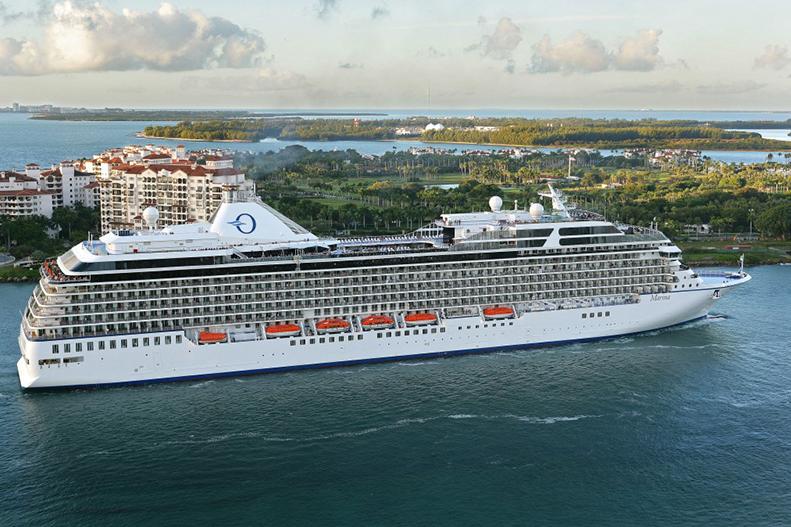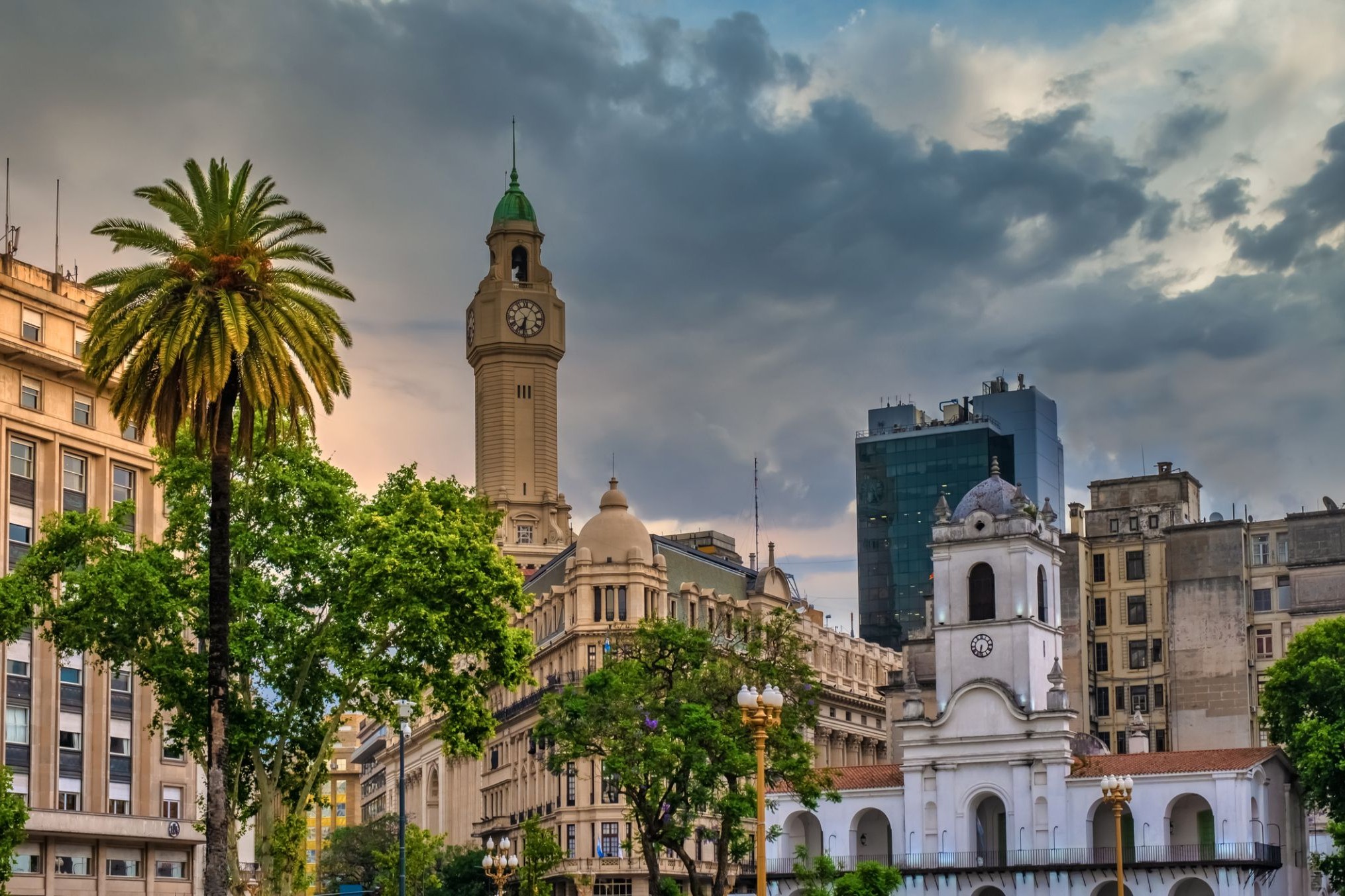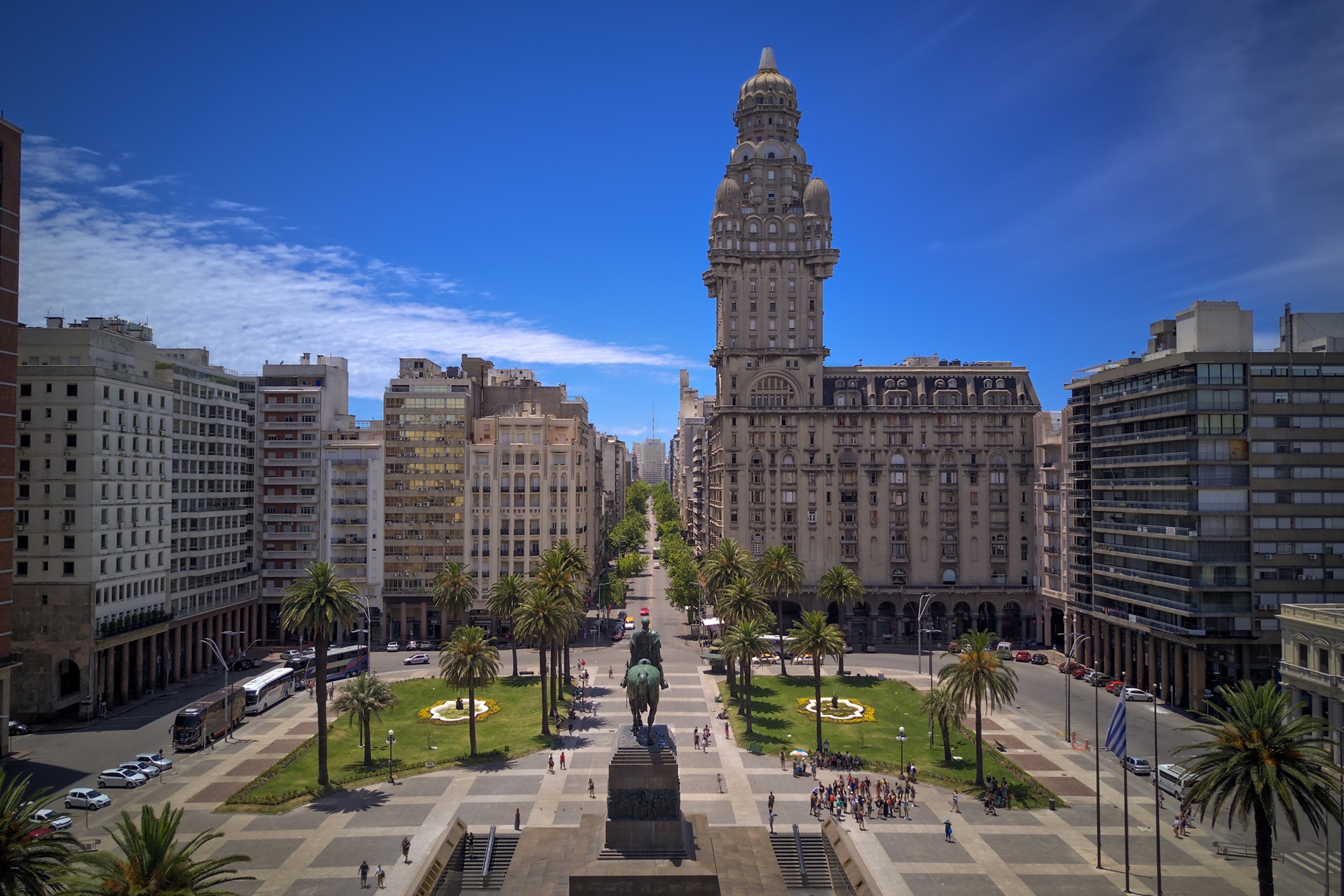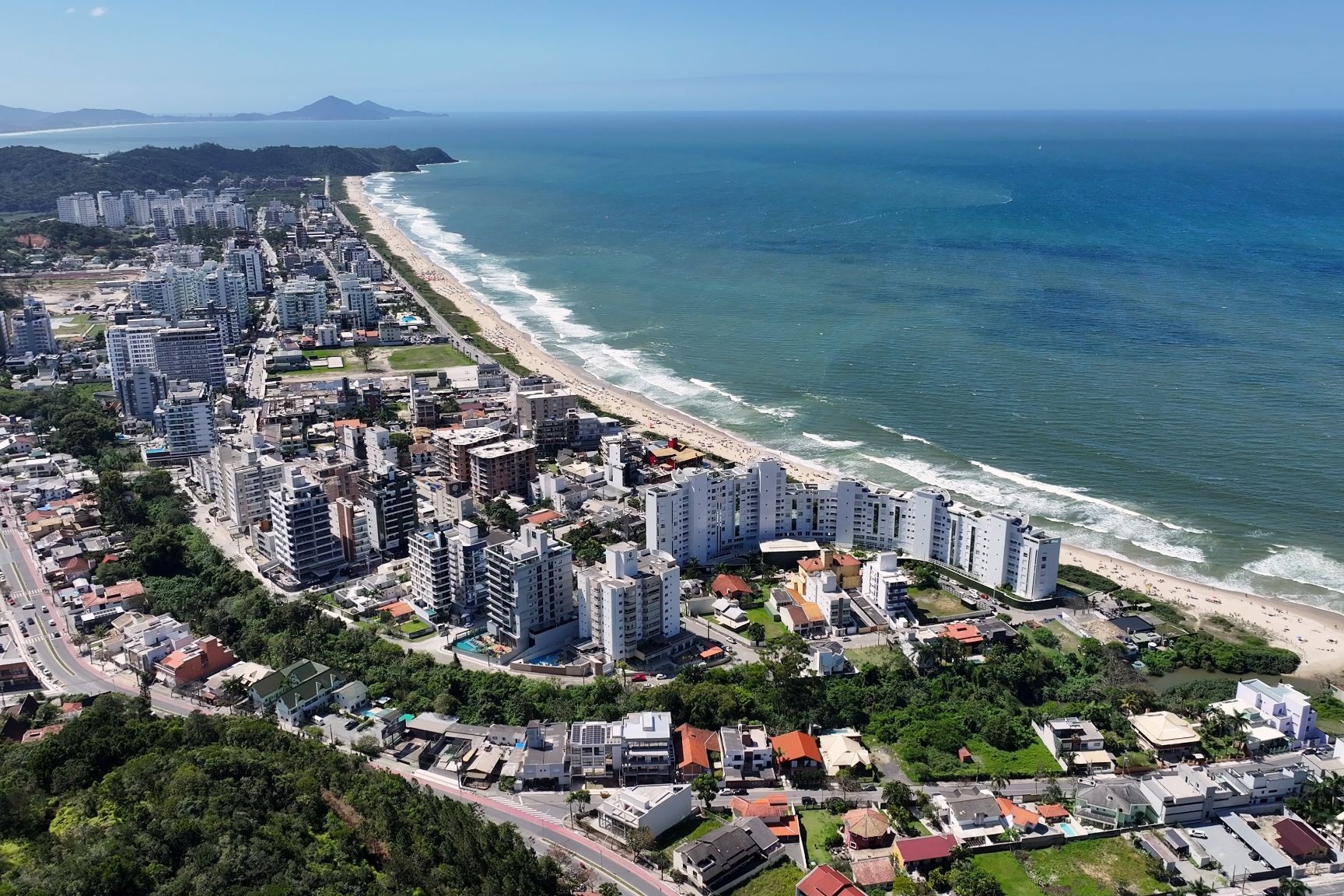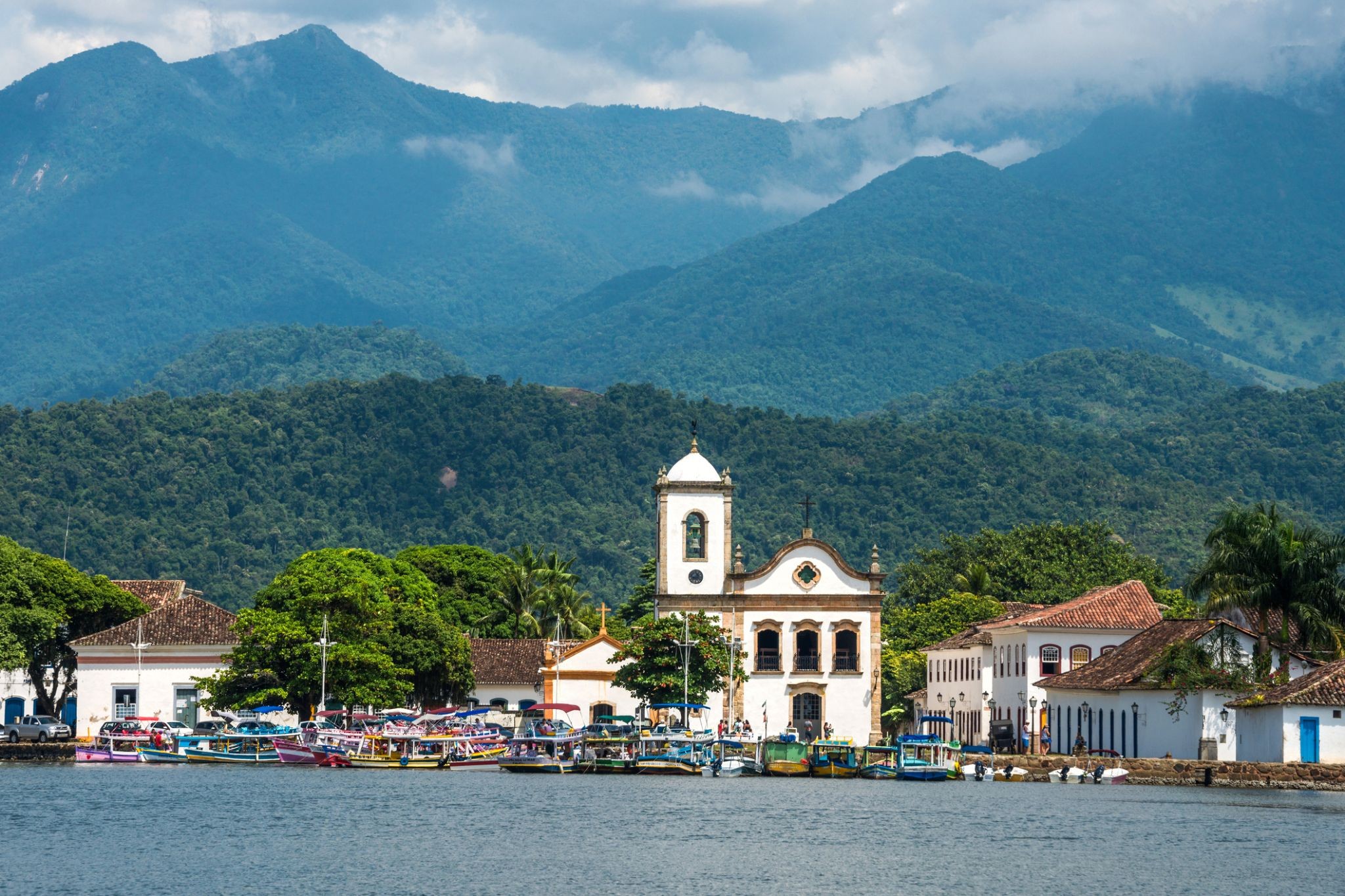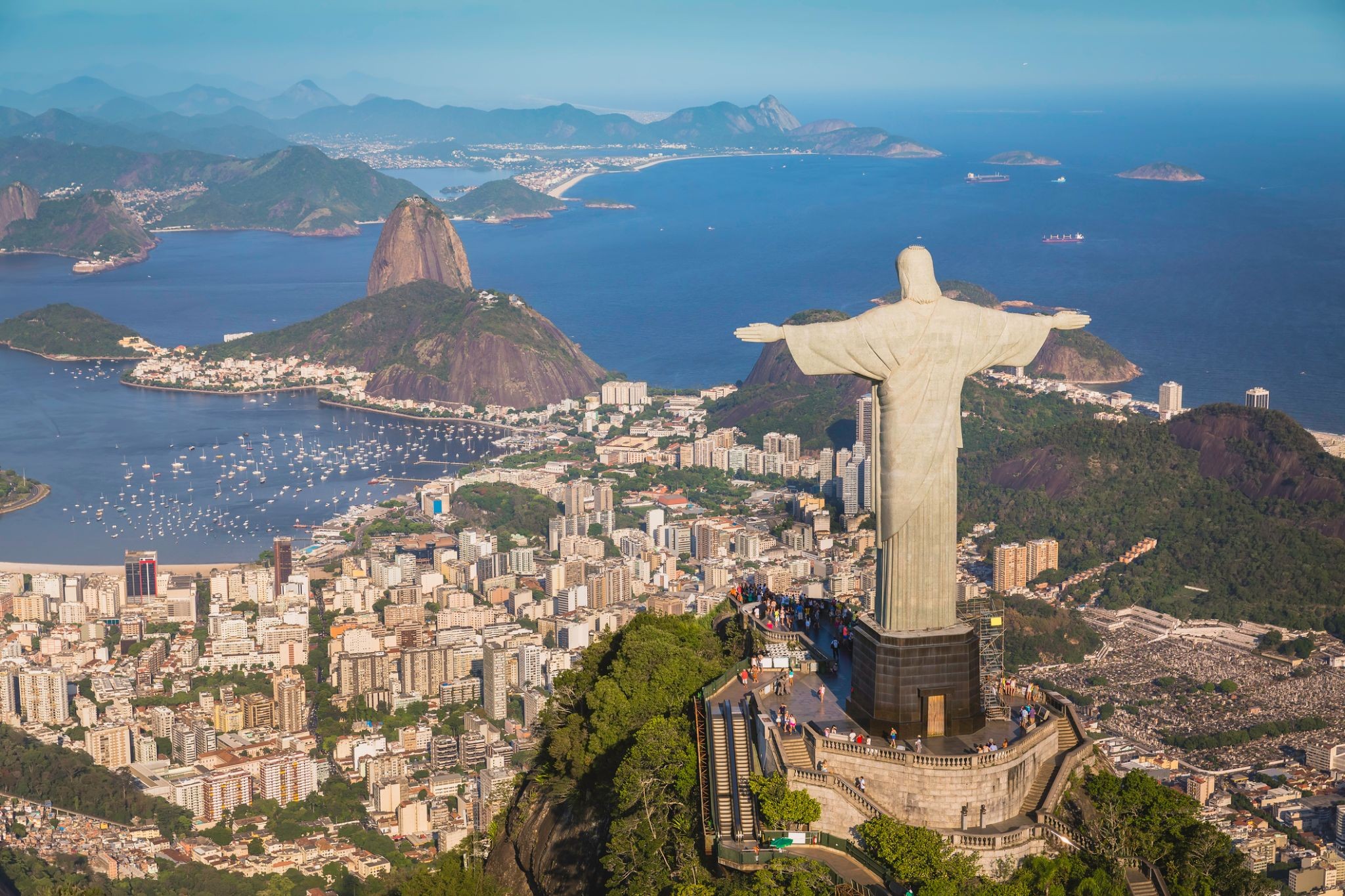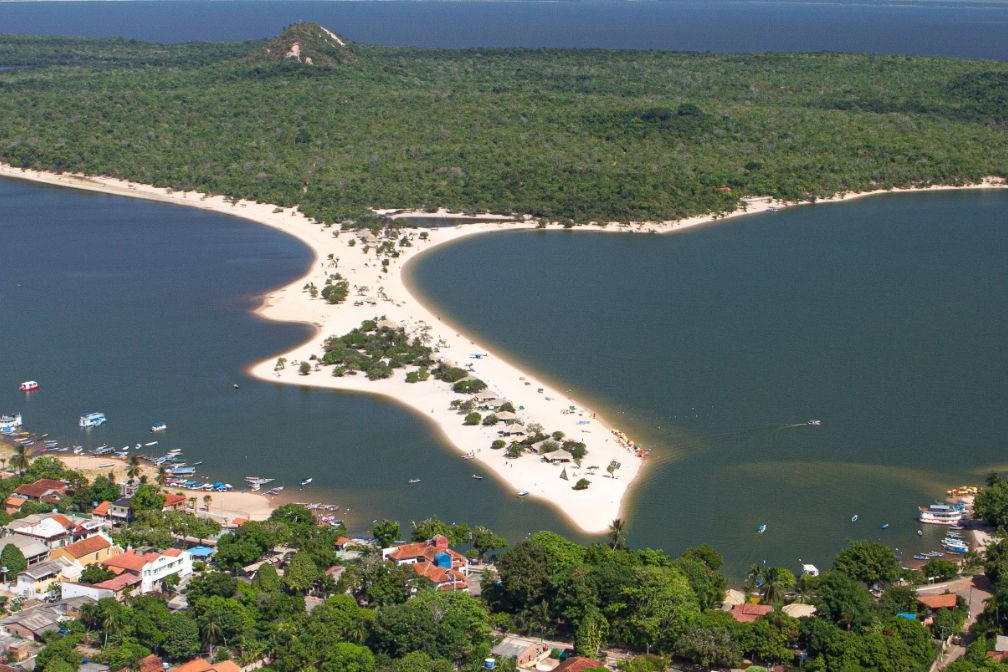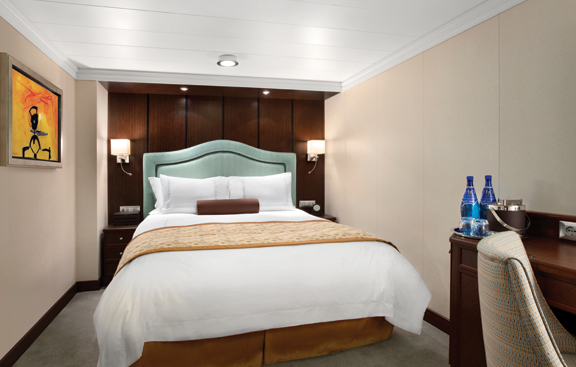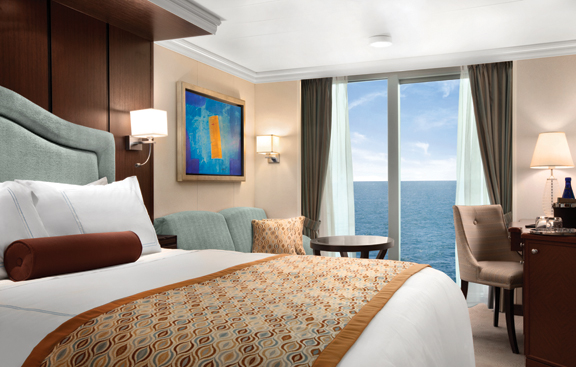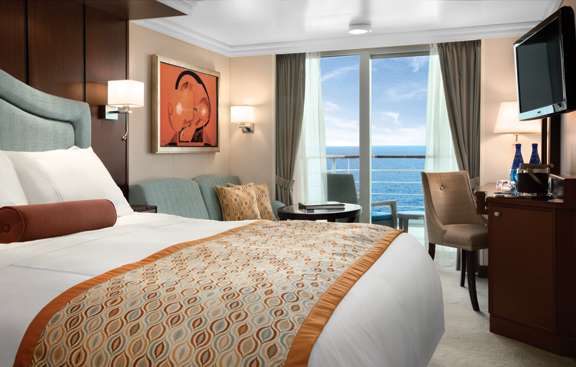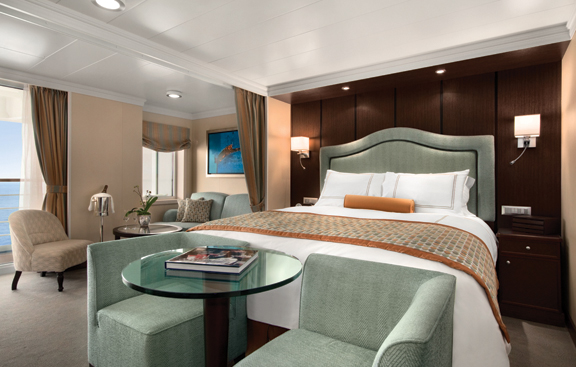Rejs 30 941 229
Mityczne sekrety Brazylii
| Region rejsu : Ameryka Południowa/Antarktyda |
| Firma : Oceania Cruises |
| Statek : Marina |
| Data rozpoczęcia : sob. 07 mar 2026 |
| Data zakończenia : wt. 07 kwi 2026 |
| Liczba nocy : 31 noc |
Harmonogram
| Dzień | Data | Port | Wypłynięcie | Odpłynięcie |
|---|---|---|---|---|
| 1 | 7.03 sob. | Buenos Aires / Argentyna | 18:00 | |
| 2 | 8.03 niedz. | Montevideo / Uruguay | 08:00 | 20:00 |
| 3 | 9.03 pon. | Punta del Este / Uruguay | 08:00 | 17:00 |
| 4 | 10.03 wt. | Dzień na morzu / Morze | ||
| 5 | 11.03 śr. | Itažai / Brazylia | 10:00 | 19:00 |
| 6 | 12.03 czw. | Santos / Brazylia | 09:00 | 19:00 |
| 7 | 13.03 pt. | Parati / Brazylia | 08:00 | 18:00 |
| 8 | 14.03 sob. | Wielka Wyspa Ilha Grande / Brazylia | 08:00 | 18:00 |
| 9 | 15.03 niedz. | Armacao dos Buzios / Brazylia | 08:00 | 18:00 |
| 10 | 16.03 pon. | Rio de Janeiro / Brazylia | 08:00 | |
| 11 | 17.03 wt. | Rio de Janeiro / Brazylia | ||
| 12 | 18.03 śr. | Rio de Janeiro / Brazylia | 13:00 | |
| 13 | 19.03 czw. | Dzień na morzu / Morze | ||
| 14 | 20.03 pt. | Dzień na morzu / Morze | ||
| 15 | 21.03 sob. | Rafa | 07:00 | 15:00 |
| 16 | 22.03 niedz. | Dzień na morzu / Morze | ||
| 17 | 23.03 pon. | Dzień na morzu / Morze | ||
| 18 | 24.03 wt. | Dzień na morzu / Morze | ||
| 19 | 25.03 śr. | Alter do Chao / Brazylia | 13:00 | 20:00 |
| 20 | 26.03 czw. | Wioska Boca de Valeria / Brazylia | 07:00 | 15:00 |
| 21 | 27.03 pt. | Manaus / Brazylia | 09:00 | |
| 22 | 28.03 sob. | Manaus / Brazylia | 16:00 | |
| 23 | 29.03 niedz. | Паринтинс Parintins / Brazylia | 10:00 | 18:00 |
| 24 | 30.03 pon. | Santarem / Brazylia | 07:00 | 15:00 |
| 25 | 31.03 wt. | Dzień na morzu / Morze | ||
| 26 | 1.04 śr. | Dzień na morzu / Morze | ||
| 27 | 2.04 czw. | Dzień na morzu / Morze | ||
| 28 | 3.04 pt. | Castries / Saint Lucia | 11:00 | 17:00 |
| 29 | 4.04 sob. | Basseterre, Saint Kitts / Saint Kitts i Nevis | 07:00 | 14:00 |
| 30 | 5.04 niedz. | Dzień na morzu / Morze | ||
| 31 | 6.04 pon. | Dzień na morzu / Morze | ||
| 32 | 7.04 wt. | Miami / USA | 07:00 | 17:00 |
-
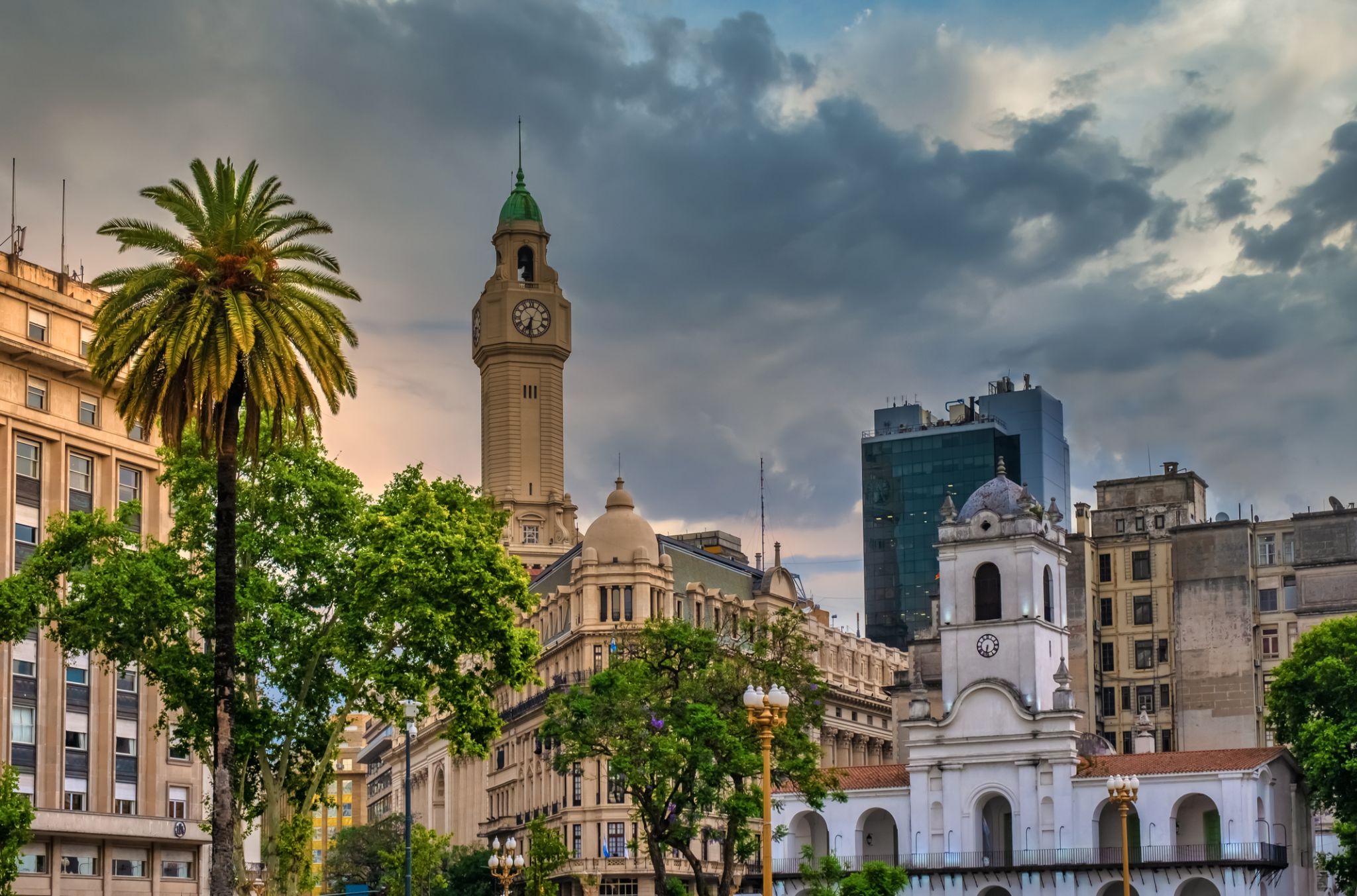 Dzień 1: 18:00
Dzień 1: 18:00Buenos Aires / Argentyna
the capital city and chief port of Argentina, in the eastern central part of the country, on the Plata River; population 3,042,600 (est. 2008).
-
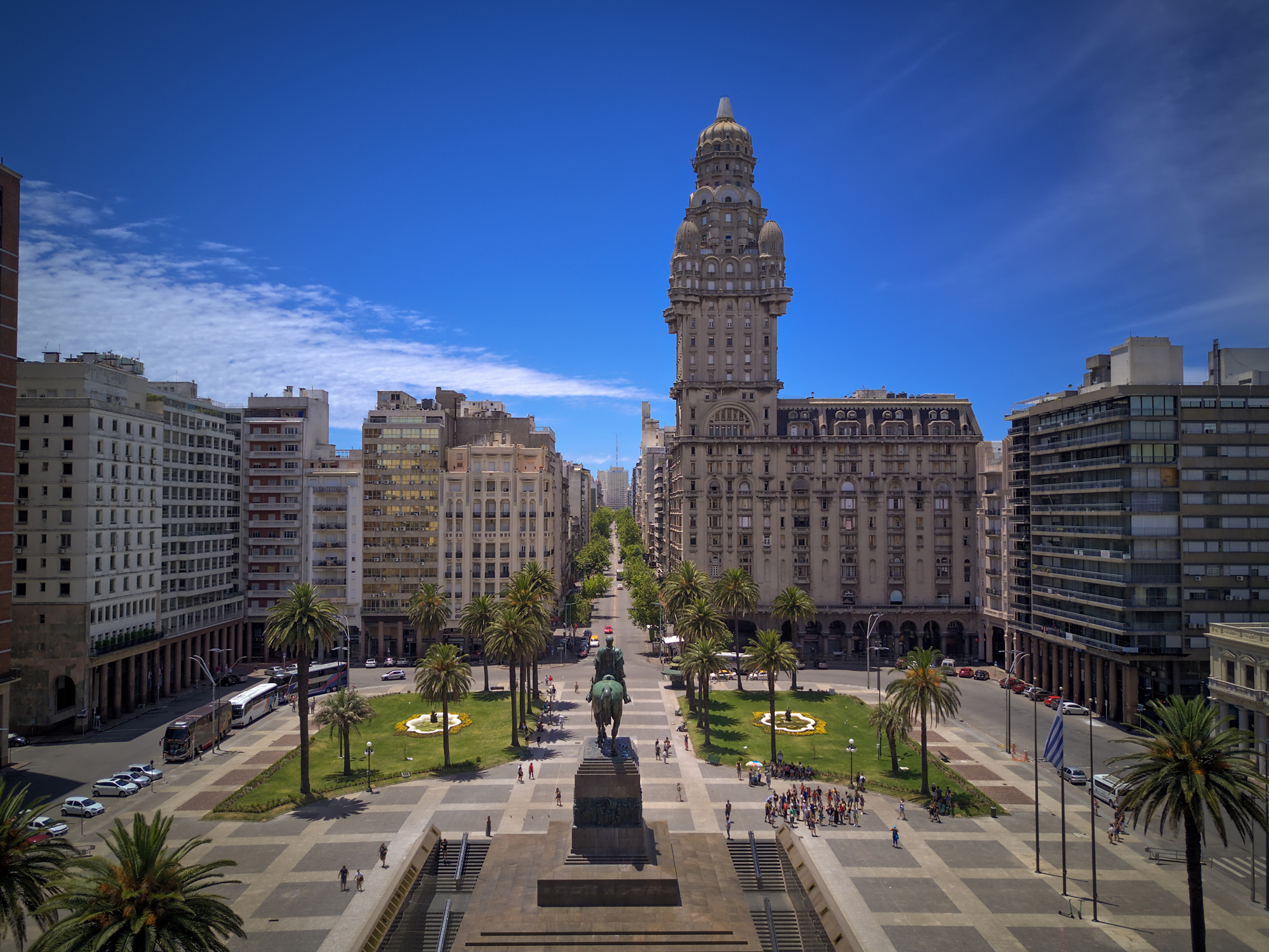 Dzień 2: 08:00-20:00
Dzień 2: 08:00-20:00Montevideo / Uruguay
Montevideo is the capital and largest city of Uruguay. According to the 2011 census, the city proper has a population of 1,319,108 (about one-third of the country's total population) in an area of 201 square kilometres (78 sq mi). The southernmost capital city in the Americas, Montevideo is situated on the southern coast of the country, on the northeastern bank of the Río de la Plata.
The city was established in 1724 by a Spanish soldier, Bruno Mauricio de Zabala, as a strategic move amidst the Spanish-Portuguese dispute over the platine region. It was also under brief British rule in 1807. Montevideo is the seat of the administrative headquarters of Mercosur and ALADI, Latin America’s leading trade blocs, a position that entailed comparisons to the role of Brussels in Europe.
-
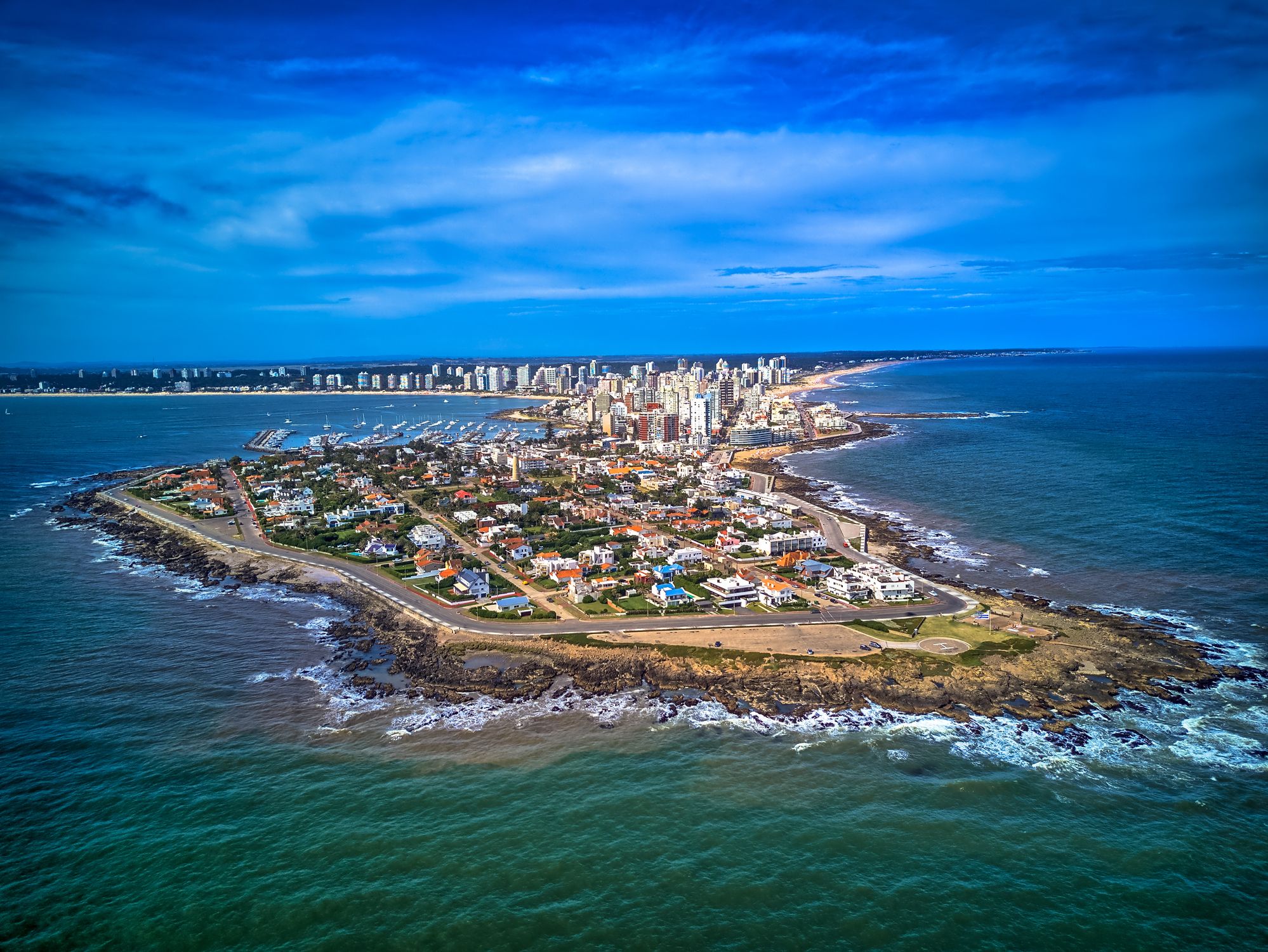 Dzień 3: 08:00-17:00
Dzień 3: 08:00-17:00Punta del Este / Uruguay
Punta del Este — urugwajski kurort nad Atlantykiem
Punta del Este to jeden z najsłynniejszych kurortów Ameryki Południowej, położony na południowym wybrzeżu Urugwaju, gdzie spotykają się wody Oceanu Atlantyckiego i estuarium La Platy. Miasto słynie z kontrastów — luksusowe dzielnice z nowoczesnymi wieżowcami, jachtami i wykwintnymi restauracjami sąsiadują z cichymi, piaszczystymi plażami, malowniczymi wydmami i falami idealnymi do surfowania. Nazywane jest „Monako Ameryki Południowej” ze względu na swoją luksusową infrastrukturę i popularność wśród międzynarodowych celebrytów.
Poza plażami, Punta del Este oferuje wiele atrakcji kulturalnych i przyrodniczych: rzeźba „La Mano”, która stała się symbolem miasta, muzeum sztuki współczesnej Ralli oraz pobliskie wyspy z fokami. Warto też odwiedzić artystyczną dzielnicę La Barra lub podziwiać zachód słońca przy latarni morskiej. W sezonie letnim (grudzień–luty) miasto tętni życiem, przyciągając turystów z całego świata szukających słońca, komfortu i dynamicznego życia nocnego.
-
 Dzień 4:
Dzień 4:Dzień na morzu / Morze
-
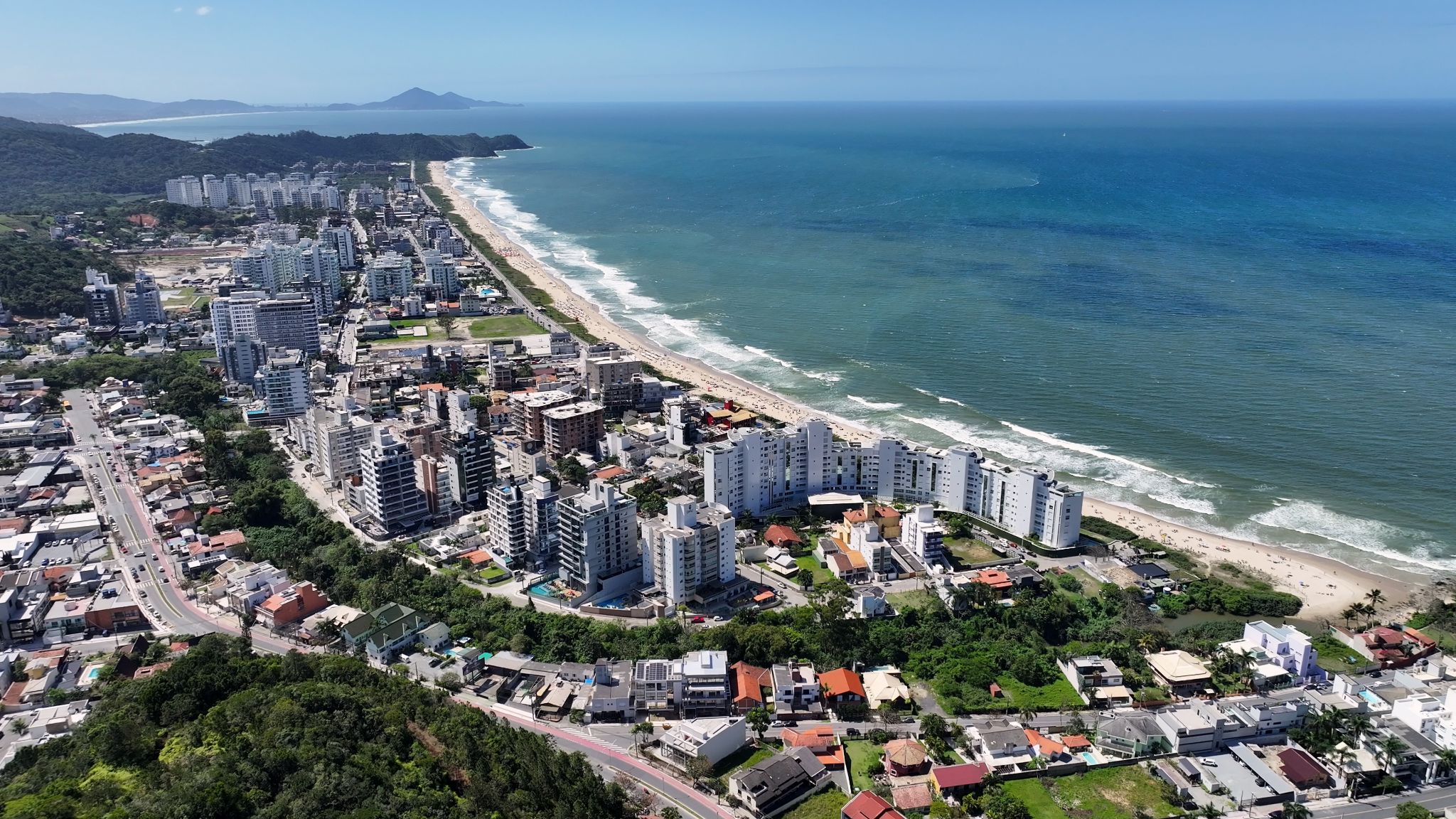 Dzień 5: 10:00-19:00
Dzień 5: 10:00-19:00Itažai / Brazylia
Itajaí to nadmorskie miasto w południowej Brazylii, w stanie Santa Catarina, znane z ruchliwego portu i rozwiniętej infrastruktury morskiej. Port Itajaí uważany jest za jeden z najważniejszych w kraju, szczególnie w eksporcie mięsa i produktów rolnych. Miasto przyciąga nie tylko gości biznesowych, ale i turystów, oferując unikalne połączenie przemysłowych krajobrazów z pięknem przyrody. Spacerując promenadą, można podziwiać ogromne statki towarowe na tle Oceanu Atlantyckiego i skosztować świeżych owoców morza w licznych restauracjach.
Pomimo biznesowego charakteru, Itajaí oferuje spokojne plaże, przytulne parki i wydarzenia kulturalne. Jednym z najbardziej znanych jest Festa do Mare – święto marynarzy z paradami, koncertami i rybnymi przysmakami. W pobliżu znajduje się kurort Balneário Camboriú – jedno z najpopularniejszych miejsc wypoczynku plażowego w Brazylii. Itajaí to miejsce, gdzie morze, kultura i dynamiczne życie południowej Brazylii łączą się w jedną całość – idealne na krótki przystanek lub spokojne zwiedzanie regionu.
-
 Dzień 6: 09:00-19:00
Dzień 6: 09:00-19:00Santos / Brazylia
-
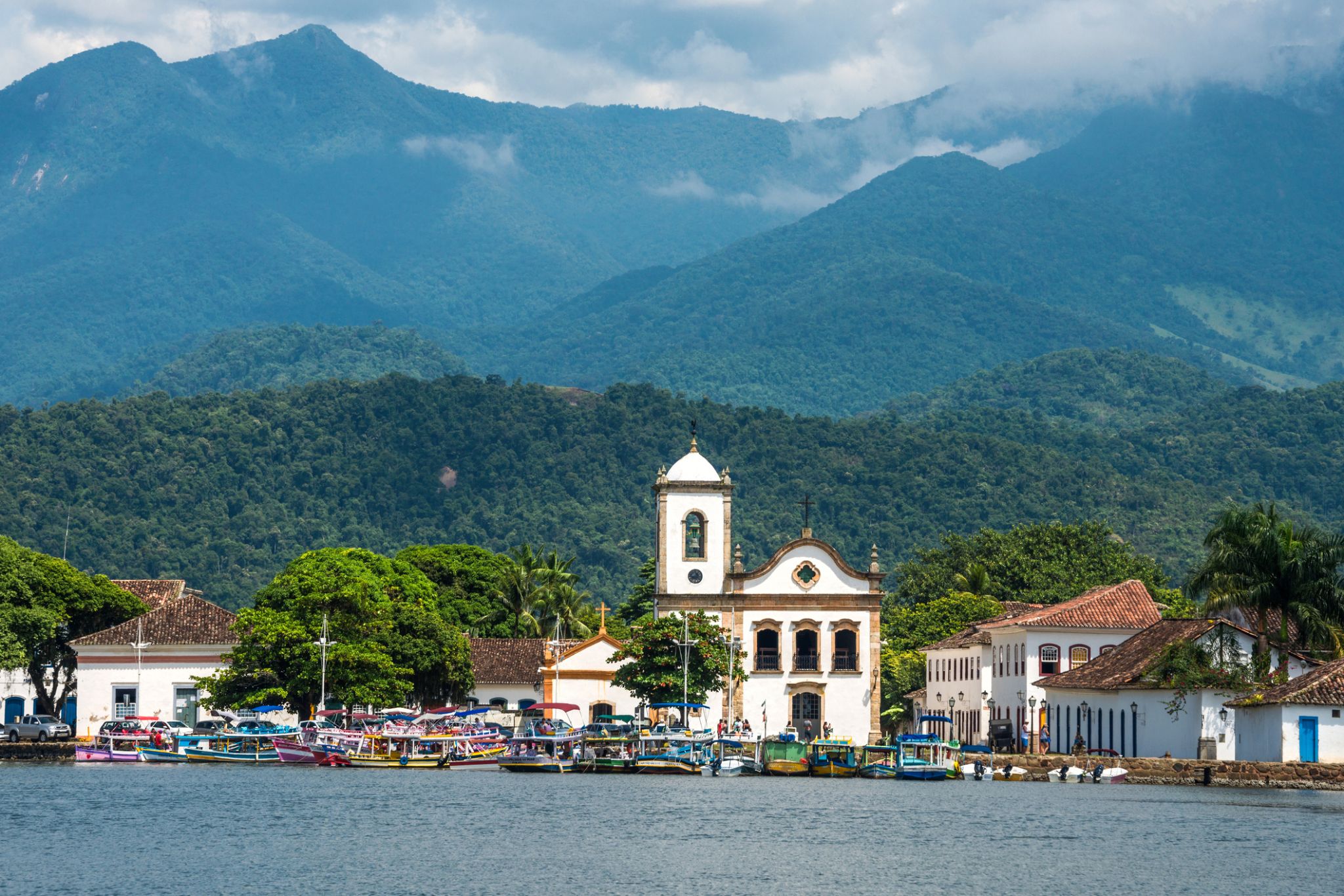 Dzień 7: 08:00-18:00
Dzień 7: 08:00-18:00Parati / Brazylia
-
 Dzień 8: 08:00-18:00
Dzień 8: 08:00-18:00Wielka Wyspa Ilha Grande / Brazylia
Wśród szmaragdowych fal u wybrzeży Brazylii kryje się Ilha Grande, która zachwyca dziką naturą i prawdziwym duchem przygody. Ta wyspa w stanie Rio de Janeiro niegdyś pełniła funkcję więzienia i kolonii dla trędowatych, a dziś jest idealnym miejscem dla tych, którzy chcą uciec od miejskiego zgiełku. Nie ma tu samochodów – zamiast dróg są ścieżki prowadzące przez dżunglę do plaż z białym piaskiem, krystalicznych lagun i wodospadów ukrytych w tropikalnym lesie.
Podróżni mogą odkrywać ponad 100 plaż, w tym słynną Lopes Mendes – uznawaną za jedną z najpiękniejszych na świecie. Rejsy do opuszczonych więzień, nurkowanie przy wrakach statków oraz wędrówki przez lasy Atlantyckie oferują niezliczone możliwości aktywnego wypoczynku. Ilha Grande to nie tylko kurort, ale żywe muzeum przyrody i historii, gdzie każdy krok przynosi coś nowego.
-
 Dzień 9: 08:00-18:00
Dzień 9: 08:00-18:00Armacao dos Buzios / Brazylia
Armação dos Búzios, często nazywane po prostu Búzios, to nadmorskie miasteczko i gmina w stanie Rio de Janeiro w Brazylii. W 2012 roku liczyło 23 463 mieszkańców i zajmowało powierzchnię 69 km². Dziś Búzios jest popularnym miejscem wypoczynku, szczególnie wśród Brazylijczyków i Argentyńczyków.
Na początku XX wieku Búzios było niemal nieznaną wioską rybacką. Pozostało takie aż do 1964 roku, kiedy to francuska aktorka Brigitte Bardot odwiedziła Búzios. Od tego czasu miejsce to stało się popularne wśród wyższych sfer Rio de Janeiro, pragnących uciec od miejskiego zgiełku i cieszyć się ponad 23 plażami, które oferuje półwysep. Miasto rozwinęło się w międzynarodowy cel turystyczny.
Dziś półwysep oferuje spokój, bezpośredni kontakt z naturą i malownicze widoki. Plaże po zachodniej stronie oferują spokojne, przejrzyste wody, podczas gdy te po wschodniej stronie, zwrócone ku otwartemu morzu, są bardziej dzikie i przyciągają surferów oraz entuzjastów sportów wodnych. Azeda, Ferradura, João Fernandes i Armação to jedne z najpopularniejszych plaż w mieście. Wieczorem główna ulica Búzios, Rua das Pedras, oferuje aktywne życie nocne oraz szeroki wybór sklepów i restauracji.
-
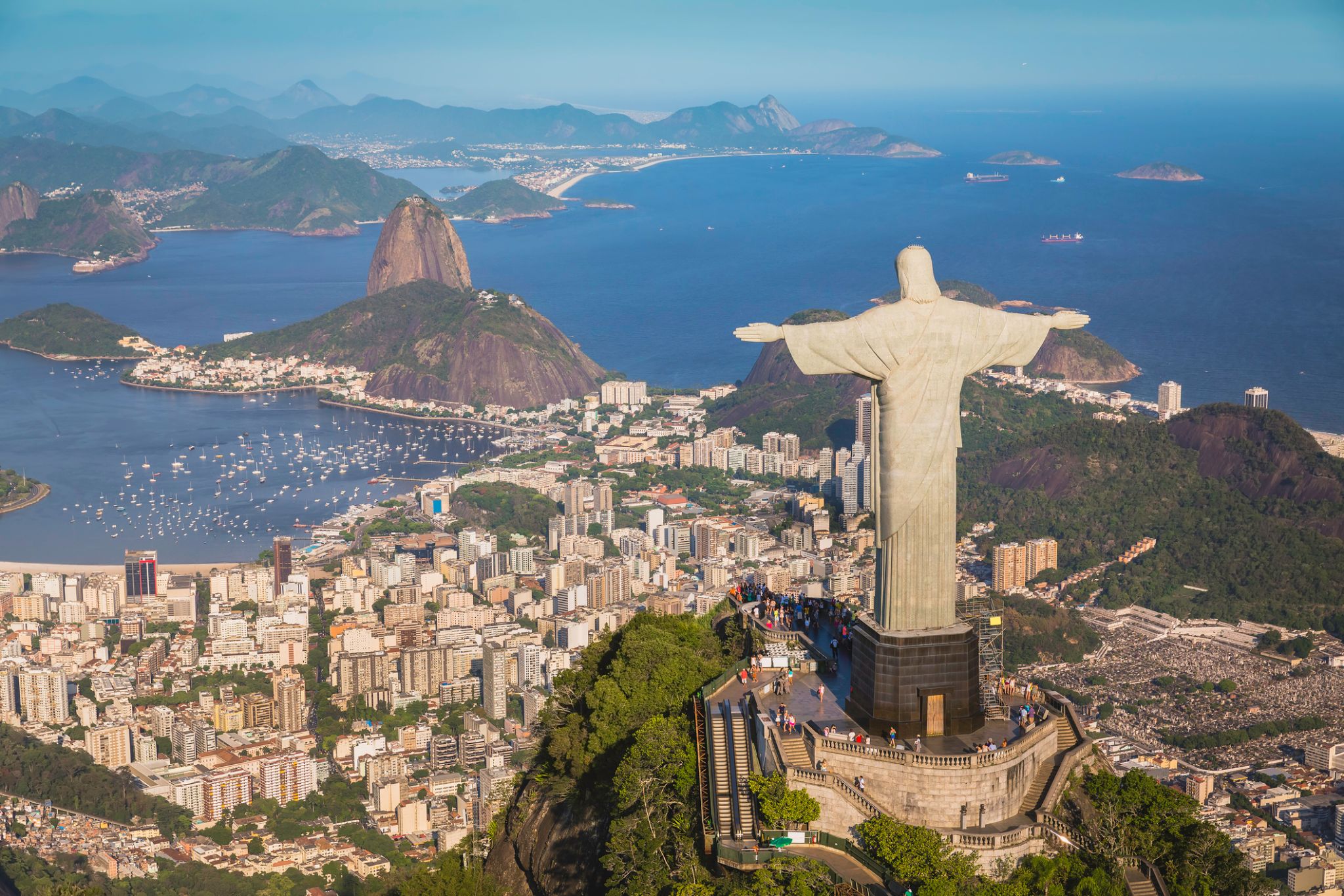 Dzień 10: 08:00
Dzień 10: 08:00Rio de Janeiro / Brazylia
Rio de Janeiro is the second-most populous municipality in Brazil and the sixth-most populous in the Americas. The metropolis is anchor to the Rio de Janeiro metropolitan area, the second-most populous metropolitan area in Brazil and sixth-most populous in the Americas. Rio de Janeiro is the capital of the state of Rio de Janeiro, Brazil's third-most populous state. Part of the city has been designated as a World Heritage Site, named "Rio de Janeiro: CariocaLandscapes between the Mountain and the Sea", by UNESCO on 1 July 2012 as a Cultural Landscape.
Founded in 1565 by the Portuguese, the city was initially the seat of the Captaincy of Rio de Janeiro, a domain of the Portuguese Empire. Later, in 1763, it became the capital of the State of Brazil, a state of the Portuguese Empire. In 1808, when the Portuguese Royal Court transferred itself from Portugal to Brazil, Rio de Janeiro became the chosen seat of the court of Queen Maria I of Portugal, who subsequently, in 1815, under the leadership of her son, the Prince Regent, and future King João VI of Portugal, raised Brazil to the dignity of a kingdom, within the United Kingdom of Portugal, Brazil, and Algarves. Rio stayed the capital of the pluricontinental Lusitanian monarchy until 1822, when the War of Brazilian Independence began. This is one of the few instances in history that the capital of a colonising country officially shifted to a city in one of its colonies. Rio de Janeiro subsequently served as the capital of the independent monarchy, the Empire of Brazil, until 1889, and then the capital of a republican Brazil until 1960 when the capital was transferred to Brasília.
-
 Dzień 11:
Dzień 11:Rio de Janeiro / Brazylia
Rio de Janeiro is the second-most populous municipality in Brazil and the sixth-most populous in the Americas. The metropolis is anchor to the Rio de Janeiro metropolitan area, the second-most populous metropolitan area in Brazil and sixth-most populous in the Americas. Rio de Janeiro is the capital of the state of Rio de Janeiro, Brazil's third-most populous state. Part of the city has been designated as a World Heritage Site, named "Rio de Janeiro: CariocaLandscapes between the Mountain and the Sea", by UNESCO on 1 July 2012 as a Cultural Landscape.
Founded in 1565 by the Portuguese, the city was initially the seat of the Captaincy of Rio de Janeiro, a domain of the Portuguese Empire. Later, in 1763, it became the capital of the State of Brazil, a state of the Portuguese Empire. In 1808, when the Portuguese Royal Court transferred itself from Portugal to Brazil, Rio de Janeiro became the chosen seat of the court of Queen Maria I of Portugal, who subsequently, in 1815, under the leadership of her son, the Prince Regent, and future King João VI of Portugal, raised Brazil to the dignity of a kingdom, within the United Kingdom of Portugal, Brazil, and Algarves. Rio stayed the capital of the pluricontinental Lusitanian monarchy until 1822, when the War of Brazilian Independence began. This is one of the few instances in history that the capital of a colonising country officially shifted to a city in one of its colonies. Rio de Janeiro subsequently served as the capital of the independent monarchy, the Empire of Brazil, until 1889, and then the capital of a republican Brazil until 1960 when the capital was transferred to Brasília.
-
 Dzień 12: 13:00
Dzień 12: 13:00Rio de Janeiro / Brazylia
Rio de Janeiro is the second-most populous municipality in Brazil and the sixth-most populous in the Americas. The metropolis is anchor to the Rio de Janeiro metropolitan area, the second-most populous metropolitan area in Brazil and sixth-most populous in the Americas. Rio de Janeiro is the capital of the state of Rio de Janeiro, Brazil's third-most populous state. Part of the city has been designated as a World Heritage Site, named "Rio de Janeiro: CariocaLandscapes between the Mountain and the Sea", by UNESCO on 1 July 2012 as a Cultural Landscape.
Founded in 1565 by the Portuguese, the city was initially the seat of the Captaincy of Rio de Janeiro, a domain of the Portuguese Empire. Later, in 1763, it became the capital of the State of Brazil, a state of the Portuguese Empire. In 1808, when the Portuguese Royal Court transferred itself from Portugal to Brazil, Rio de Janeiro became the chosen seat of the court of Queen Maria I of Portugal, who subsequently, in 1815, under the leadership of her son, the Prince Regent, and future King João VI of Portugal, raised Brazil to the dignity of a kingdom, within the United Kingdom of Portugal, Brazil, and Algarves. Rio stayed the capital of the pluricontinental Lusitanian monarchy until 1822, when the War of Brazilian Independence began. This is one of the few instances in history that the capital of a colonising country officially shifted to a city in one of its colonies. Rio de Janeiro subsequently served as the capital of the independent monarchy, the Empire of Brazil, until 1889, and then the capital of a republican Brazil until 1960 when the capital was transferred to Brasília.
-
 Dzień 13:
Dzień 13:Dzień na morzu / Morze
-
 Dzień 14:
Dzień 14:Dzień na morzu / Morze
-
 Dzień 15: 07:00-15:00
Dzień 15: 07:00-15:00Rafa
-
 Dzień 16:
Dzień 16:Dzień na morzu / Morze
-
 Dzień 17:
Dzień 17:Dzień na morzu / Morze
-
 Dzień 18:
Dzień 18:Dzień na morzu / Morze
-
 Dzień 19: 13:00-20:00
Dzień 19: 13:00-20:00Alter do Chao / Brazylia
-
 Dzień 20: 07:00-15:00
Dzień 20: 07:00-15:00Wioska Boca de Valeria / Brazylia
-
 Dzień 21: 09:00
Dzień 21: 09:00Manaus / Brazylia
Manaus, previously known as Manaós before 1939 and formerly Barra do Rio Negro, is the capital city of the state of Amazonas in the North Region of Brazil. It is situated near the confluence of the Negro and Solimões rivers. With a population of more than 2 million, it is the most populous city of both the Brazilian state of Amazonas and the Amazon rainforest.
The city was founded in 1669 as the Fort of São José do Rio Negro. It was elevated to a town in 1832 with the name of "Manaus", an altered spelling of the indigenous Manaós peoples, and legally transformed into a city on October 24, 1848, with the name of Cidade da Barra do Rio Negro, Portuguese for "The City of the Margins of the Black River". On September 4, 1856 it returned to its original name.
Manaus is located in the middle of the Amazon rainforest, and access to the city is primarily by boat or airplane. This isolation helped preserve both the natural environment as well as the culture of the city. The culture of Manaus, more than in any other urban area of Brazil, preserves the habits of Native Brazilian tribes. The city is the main access point for visiting the fauna and flora of the Brazilian Amazon. Few places in the world afford such a variety of plants, birds, insects, and fishes.
It was known at the beginning of the century, as "Heart of the Amazon" and "City of the Forest". Currently its main economic engine is the Industrial Park of Manaus, a Free Economic Zone. The city has a free port and an international airport. Its manufactures include electronics, chemical products, and soap; there are distilling and ship construction industries. Manaus also exports Brazil nuts, rubber, jute and rosewood oil. It has a cathedral, opera house, zoologicaland botanical gardens, an ecopark and regional and native peoples museums.
With a population of 2,145,444 people in 2018, Manaus is the most populous city in the Brazilian Amazon area and the 7th most populous in the country. It is located on the north bank of the Negro River, 18 km (11 mi) above the meeting of the rivers where the Negro merges with the Solimões, to form the Amazon proper. Manaus is 1,400 km (900 mi) inland from the Atlantic Ocean. It is the hub of tourism for the rivers, the jungle lodges and the river cruises.
The Solimões and Negro rivers meet just east of Manaus and join to form the Amazon River (using the Brazilian definition of the river; elsewhere, Solimões is considered the upper part of the Amazon). Rubber made it the richest city in South America during the late 1800s. Rubber also helped Manaus earn its nickname, the "Paris of the Tropics". Many wealthy European families settled in Manaus and brought their love for sophisticated European art, architectureand culture with them. Manaus is also a duty-free zone, which has encouraged development in the region.
-
 Dzień 22: 16:00
Dzień 22: 16:00Manaus / Brazylia
Manaus, previously known as Manaós before 1939 and formerly Barra do Rio Negro, is the capital city of the state of Amazonas in the North Region of Brazil. It is situated near the confluence of the Negro and Solimões rivers. With a population of more than 2 million, it is the most populous city of both the Brazilian state of Amazonas and the Amazon rainforest.
The city was founded in 1669 as the Fort of São José do Rio Negro. It was elevated to a town in 1832 with the name of "Manaus", an altered spelling of the indigenous Manaós peoples, and legally transformed into a city on October 24, 1848, with the name of Cidade da Barra do Rio Negro, Portuguese for "The City of the Margins of the Black River". On September 4, 1856 it returned to its original name.
Manaus is located in the middle of the Amazon rainforest, and access to the city is primarily by boat or airplane. This isolation helped preserve both the natural environment as well as the culture of the city. The culture of Manaus, more than in any other urban area of Brazil, preserves the habits of Native Brazilian tribes. The city is the main access point for visiting the fauna and flora of the Brazilian Amazon. Few places in the world afford such a variety of plants, birds, insects, and fishes.
It was known at the beginning of the century, as "Heart of the Amazon" and "City of the Forest". Currently its main economic engine is the Industrial Park of Manaus, a Free Economic Zone. The city has a free port and an international airport. Its manufactures include electronics, chemical products, and soap; there are distilling and ship construction industries. Manaus also exports Brazil nuts, rubber, jute and rosewood oil. It has a cathedral, opera house, zoologicaland botanical gardens, an ecopark and regional and native peoples museums.
With a population of 2,145,444 people in 2018, Manaus is the most populous city in the Brazilian Amazon area and the 7th most populous in the country. It is located on the north bank of the Negro River, 18 km (11 mi) above the meeting of the rivers where the Negro merges with the Solimões, to form the Amazon proper. Manaus is 1,400 km (900 mi) inland from the Atlantic Ocean. It is the hub of tourism for the rivers, the jungle lodges and the river cruises.
The Solimões and Negro rivers meet just east of Manaus and join to form the Amazon River (using the Brazilian definition of the river; elsewhere, Solimões is considered the upper part of the Amazon). Rubber made it the richest city in South America during the late 1800s. Rubber also helped Manaus earn its nickname, the "Paris of the Tropics". Many wealthy European families settled in Manaus and brought their love for sophisticated European art, architectureand culture with them. Manaus is also a duty-free zone, which has encouraged development in the region.
-
 Dzień 23: 10:00-18:00
Dzień 23: 10:00-18:00Паринтинс Parintins / Brazylia
Parintins is a municipality in the far east of the Amazonas state, Brazil. It is part of a microregion also named Parintins. The population for the entire municipality was 109,150 (2005) and its area is 5,952 km². The city is located on Tupinambarana island in the Amazon River. Parintins is known for a popular folklore festival held there each June called Boi-Bumbá.
-
 Dzień 24: 07:00-15:00
Dzień 24: 07:00-15:00Santarem / Brazylia
-
 Dzień 25:
Dzień 25:Dzień na morzu / Morze
-
 Dzień 26:
Dzień 26:Dzień na morzu / Morze
-
 Dzień 27:
Dzień 27:Dzień na morzu / Morze
-
 Dzień 28: 11:00-17:00
Dzień 28: 11:00-17:00Castries / Saint Lucia
-
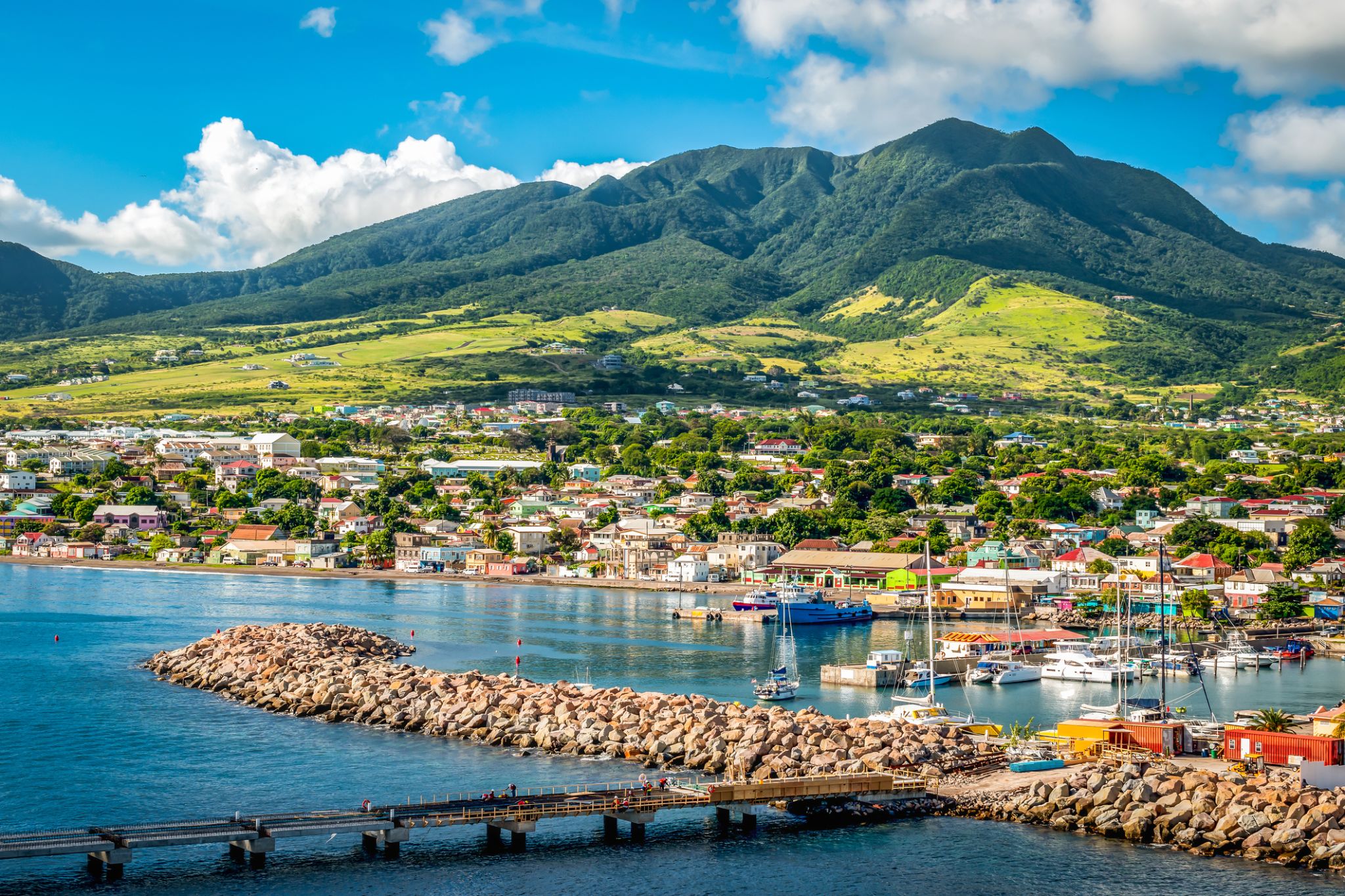 Dzień 29: 07:00-14:00
Dzień 29: 07:00-14:00Basseterre, Saint Kitts / Saint Kitts i Nevis
-
 Dzień 30:
Dzień 30:Dzień na morzu / Morze
-
 Dzień 31:
Dzień 31:Dzień na morzu / Morze
-
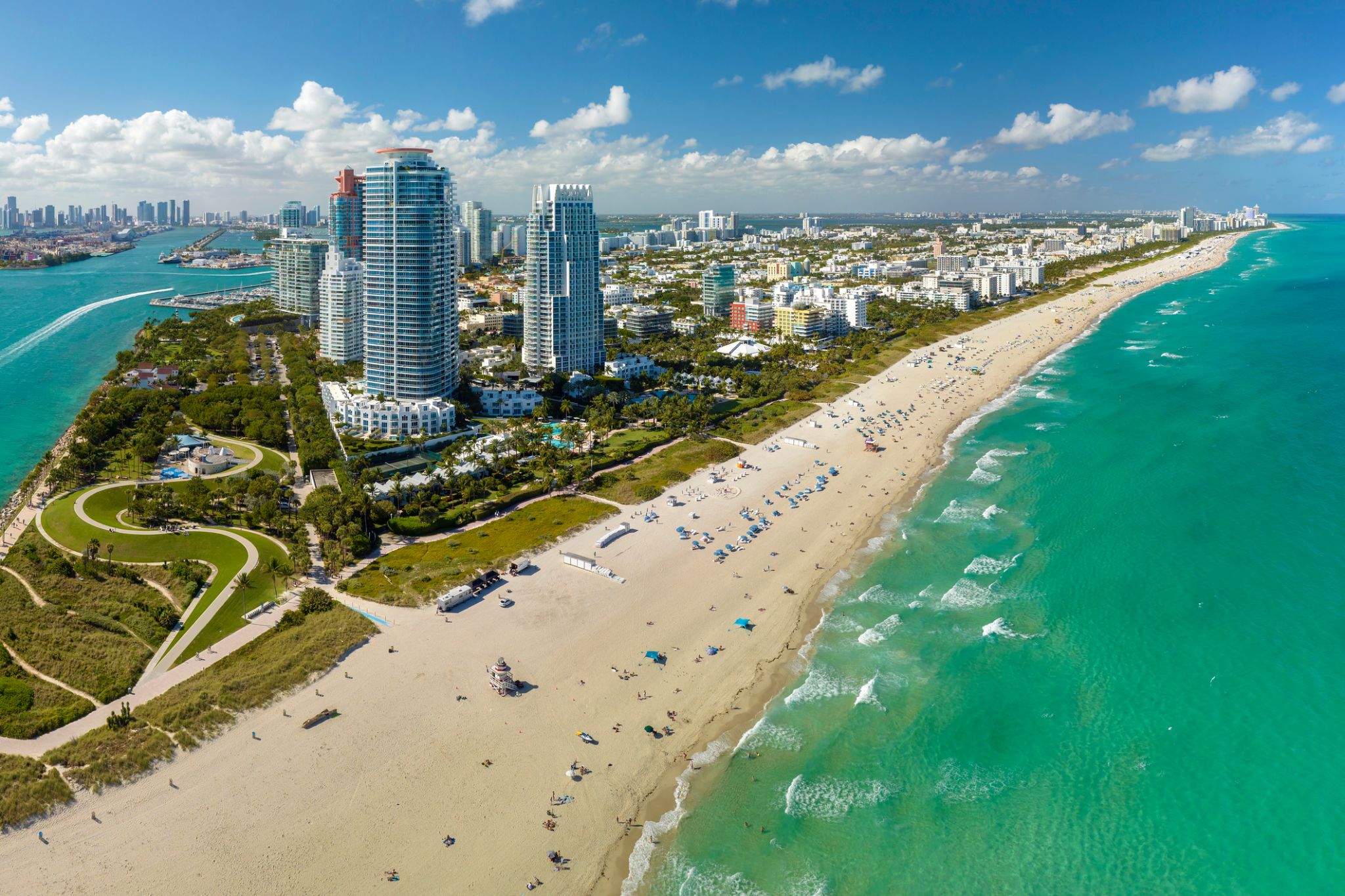 Dzień 32: 07:00-17:00
Dzień 32: 07:00-17:00Miami / USA
Miami, officially the City of Miami, is the cultural, economic and financial center of South Florida. Miami is the seat of Miami-Dade County, the most populous county in Florida. The city covers an area of about 56.6 square miles (147 km2), between the Everglades to the west and Biscayne Bay on the east; with a 2017 estimated population of 463,347, Miami is the sixth most densely populated major city in the United States. The Miami metropolitan area is home to 6.1 million people and the seventh-largest metropolitan area in the nation. Miami's metro area is the second-most populous metropolis in the southeastern United States and fourth-largest urban area in the U.S.
Miami is a major center, and a leader in finance, commerce, culture, media, entertainment, the arts, and international trade. The Miami Metropolitan Area is by far the largest urban economy in Florida and the 12th largest in the United States with a GDP of $344.9 billion as of 2017. In 2012, Miami was classified as an "Alpha−" level world city in the World Cities Study Group's inventory. In 2010, Miami ranked seventh in the United States and 33rd among global cities in terms of business activity, human capital, information exchange, cultural experience, and political engagement. In 2008, Forbes magazine ranked Miami "America's Cleanest City", for its year-round good air quality, vast green spaces, clean drinking water, clean streets, and citywide recycling programs. According to a 2009 UBS study of 73 world cities, Miami was ranked as the richest city in the United States, and the world's seventh-richest city in terms of purchasing power. Miami is nicknamed the "Capital of Latin America" and is the largest city with a Cuban-American plurality.
Greater Downtown Miami has one of the largest concentrations of international banks in the United States, and is home to many large national and international companies. The Civic Center is a major center for hospitals, research institutes, medical centers, and biotechnology industries. For more than two decades, the Port of Miami, known as the "Cruise Capital of the World", has been the number one cruise passenger port in the world. It accommodates some of the world's largest cruise ships and operations, and is the busiest port in both passenger traffic and cruise lines. Metropolitan Miami is also a major tourism hub in the southeastern U.S. for international visitors, ranking number two in the country after New York City.

